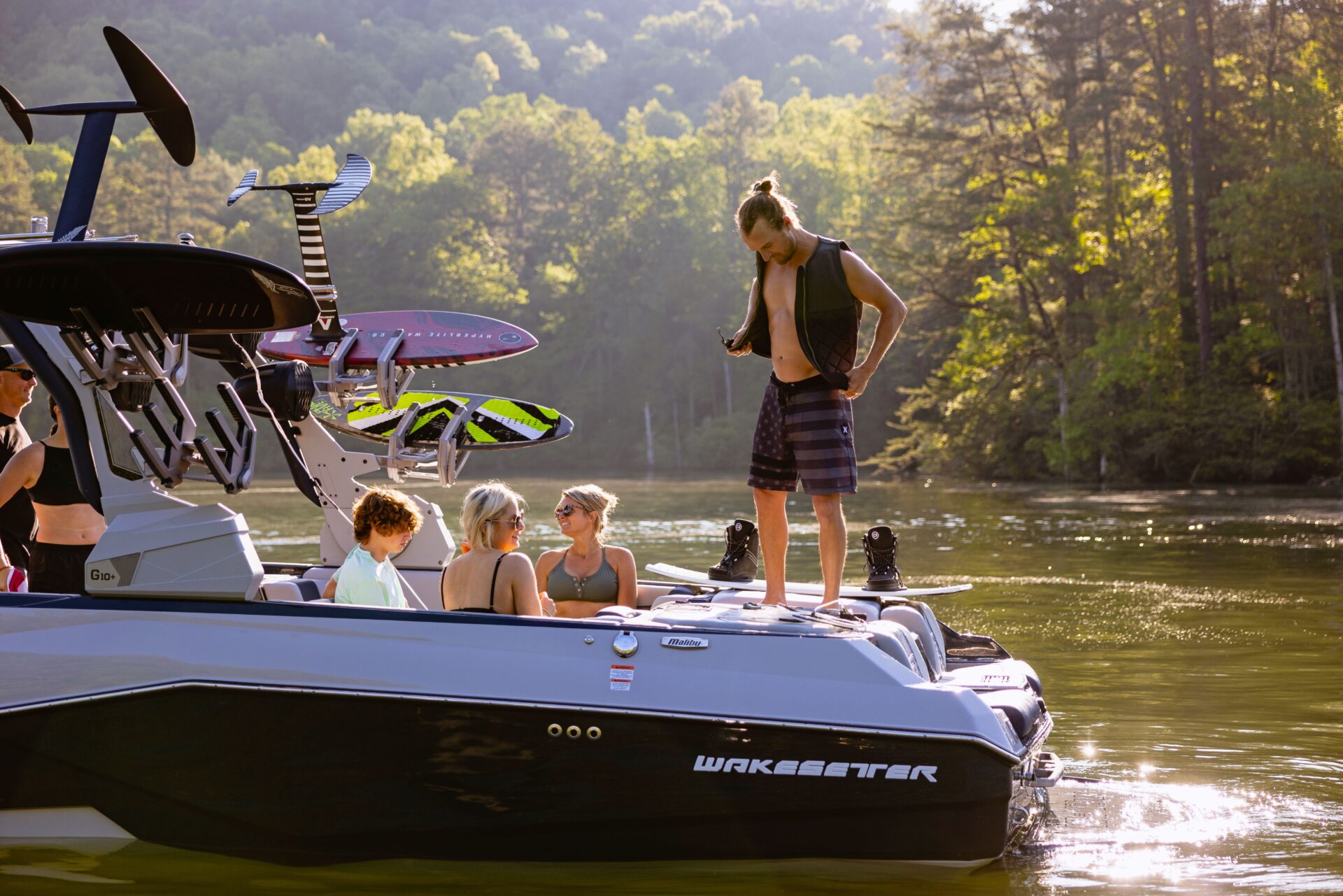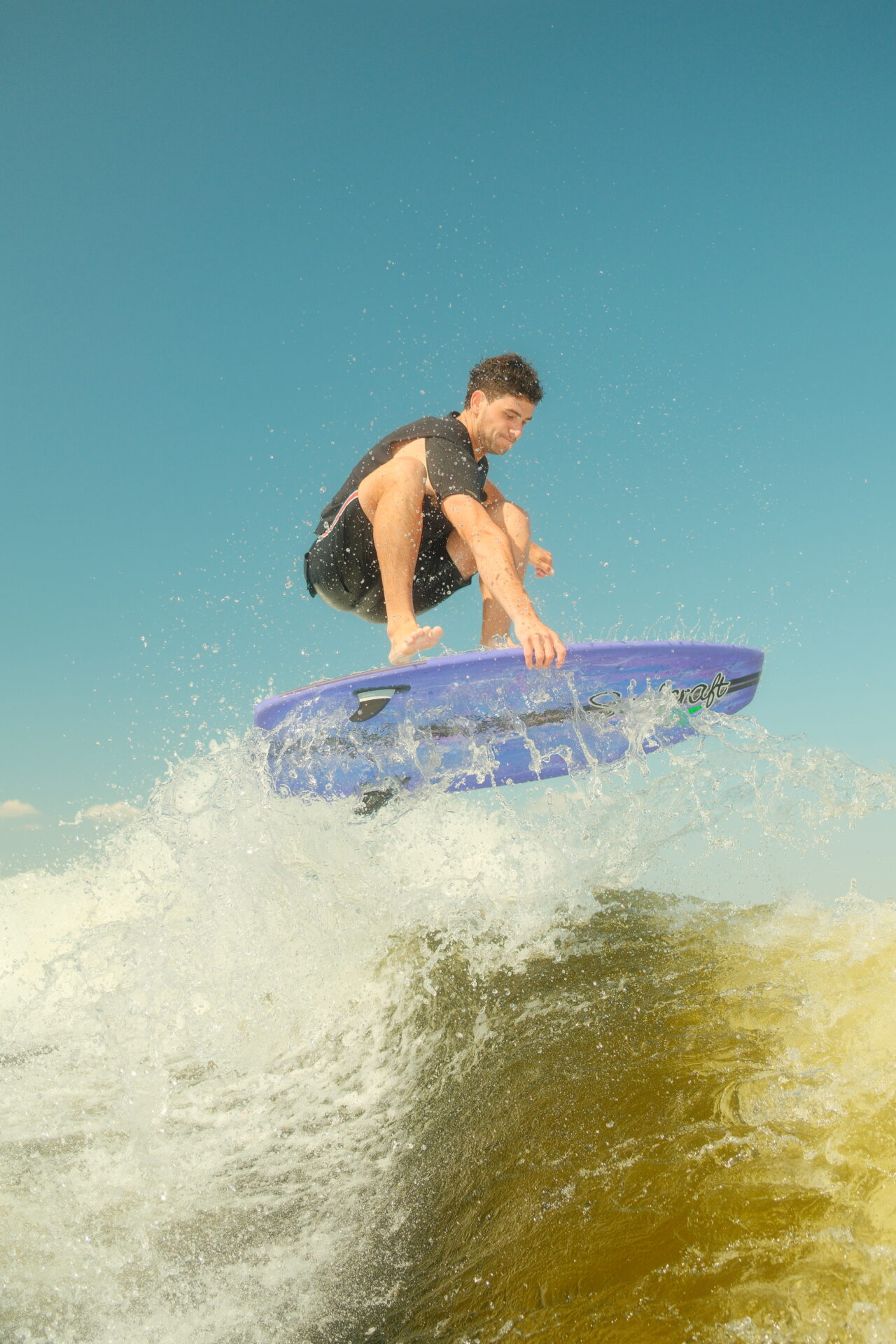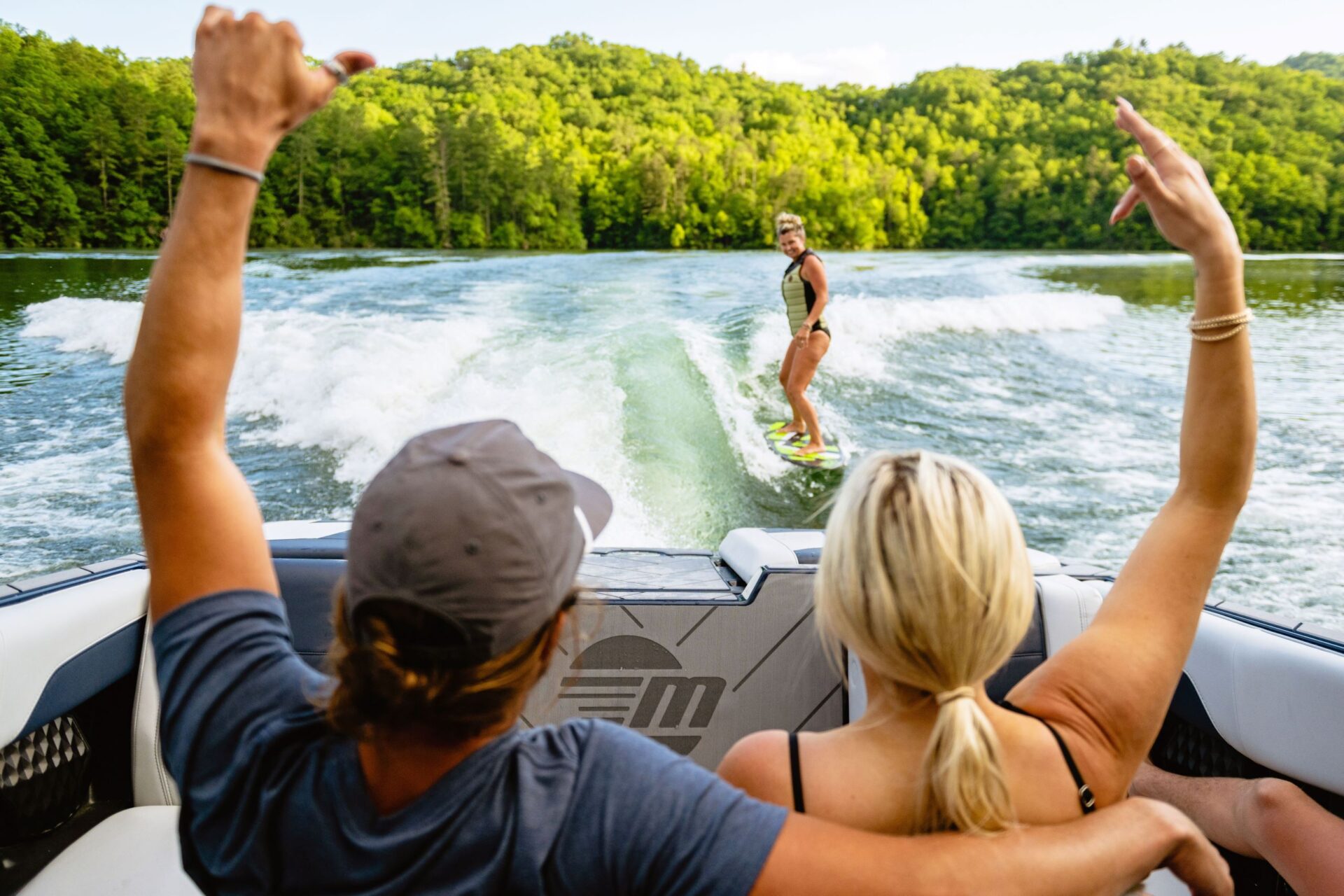Wake surfing is a thrilling and rewarding water sport that combines the best elements of surfing and wakeboarding. Whether you’re a complete beginner or looking to refine your skills, this guide will help you master the basics and get you confidently riding the waves in no time. Here are five simple steps to get started on your wake surfing journey.
1. Start with the Right Equipment
The first step to learning wake surfing is ensuring you have the proper equipment. Investing in the right gear will not only make the learning process smoother but also enhance your safety and overall experience.
Surfboard: Choose a wake surfboard designed for beginners. These boards are typically larger and more stable, making it easier to find your balance and stay on top of the water.
Boat: You’ll need a boat that can create a good wake. Boats specifically designed for wake surfing have ballast systems that help generate the ideal wave.
Life Jacket: Safety is paramount in any water sport. Make sure to wear a Coast Guard-approved life jacket that fits snugly and comfortably.
2. Get Professional Instruction
One of the best ways to accelerate your learning is by taking lessons from a professional wake surf instructor. A qualified instructor can provide personalized guidance, correct your form, and teach you the fundamentals of wake surfing.
One-on-One Lessons: Private lessons offer tailored instruction based on your skill level and learning pace.
Group Lessons: If you prefer a social learning environment, group lessons can be both fun and educational. You’ll also have the chance to learn from observing others.
3. Practice Your Balance
Wake surfing requires a good sense of balance, so it’s beneficial to practice balancing on your surfboard on dry land before hitting the water. This can help you get accustomed to the feel of the board and improve your stability.
Balance Drills: Stand on your board on the ground and practice shifting your weight from one foot to the other. Try to maintain a low, stable stance with your knees slightly bent.
Core Exercises: Strengthening your core muscles will enhance your balance and control on the water. Exercises like planks, sit-ups, and balance board training can be very effective.
4. Focus on Your Stance
Your stance plays a crucial role in your ability to stay balanced and ride the wave effectively. Here are some tips to help you find the optimal stance:
Feet Position: Place your feet shoulder-width apart on the board. Your front foot should be positioned near the center of the board, and your back foot should be slightly behind the front foot.
Knee Bend: Keep your knees slightly bent to absorb the motion of the water and maintain stability.
Weight Distribution: Center your weight over the board. Avoid leaning too far forward or backward, as this can cause you to lose balance.
5. Start Small and Gradually Progress
Wake surfing is a skill that improves with practice and patience. Start with the basics and gradually build up to more advanced maneuvers.
Getting Up on the Board: Begin by holding onto the tow rope to help you get up on the board. Keep your knees bent and lean back slightly as the boat starts to move. Once you’re standing, focus on finding your balance.
Riding the Wave: Once you’re comfortable standing on the board, practice riding the wave created by the boat. Gradually let go of the tow rope and use your body movements to stay in the sweet spot of the wave.
Advanced Techniques: As you gain confidence, you can start experimenting with turns, tricks, and carving the wave. Remember to take it slow and progress at your own pace.
Happy Wake Surfing!
Learning to wake surf can be an exhilarating experience, and by following these five simple steps, you’ll be well on your way to mastering the waves. Start with the right equipment, seek professional instruction, practice your balance, focus on your stance, and progress gradually. With dedication and practice, you’ll soon find yourself gliding effortlessly across the water and enjoying the thrill of wake surfing.
Related Articles:
Exploring Cobalt Boats for Sale at Erwin Marine Sales
Deciphering Your Boating Choice: Harris Tritoons vs. Traditional Pontoons



